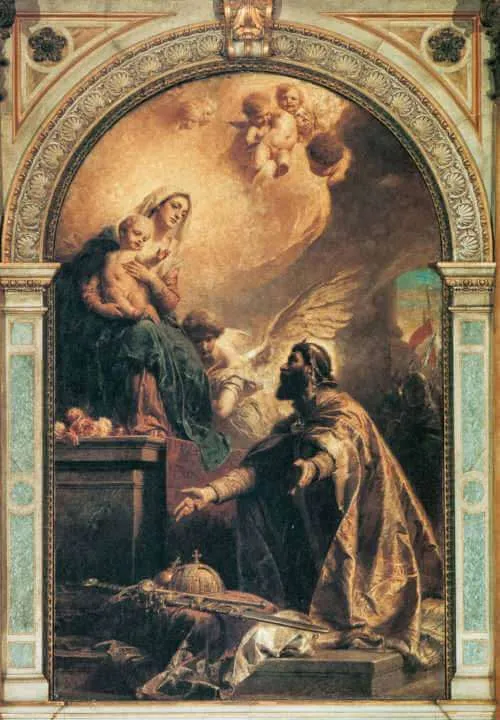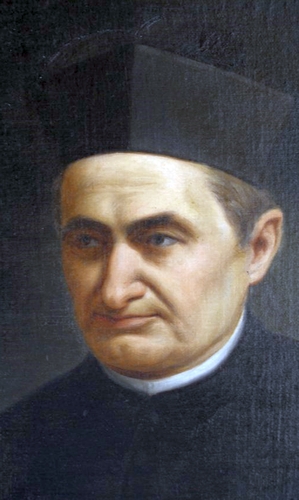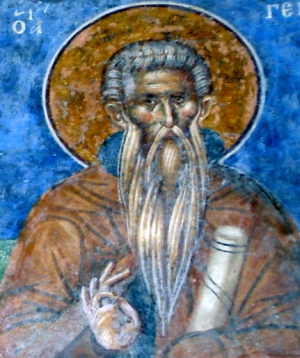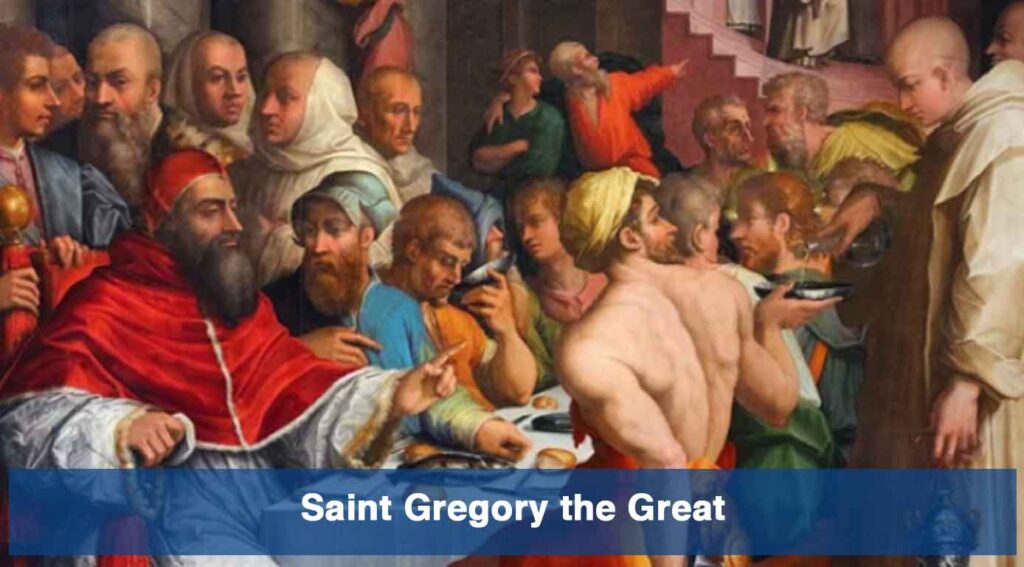c. 975–1038; Patron Saint of bricklayers, kings, stonecutters, masons, and parents who have lost a child; Canonized by Pope Gregory VII in 1083
Prior to Hungary becoming a Christian nation, its people embraced many pagan religious beliefs. They believed in numerous gods and held that every element of nature, including trees, rivers, and animals, had spiritual power. The people worshiped their ancestors, believing them to have power over the living. Shamans were sought out as mediators between the human and spiritual world, conducting rituals and interpreting dreams and omens through which they claimed to heal the sick and grant favors. The territory’s ten tribes were governed by ten chieftains who elected a Grand Prince from among them. It was into this pagan tribal world that Saint Stephen of Hungary entered, becoming king and Christianizing his newly established nation.
At the end of the tenth century, a man named Géza became Grand Prince of the Hungarians. He married a Christian woman named Sarolt, the daughter of a Hungarian chieftain. Géza was baptized but continued to participate in traditional pagan practices. He remained a fierce ruler, often governing with extreme force and spilling much blood. However, Géza did form an alliance with the Holy Roman Emperor, who sent missionaries to his lands with Géza’s permission. Géza and Sarolt had a son named Vajk, whom they had baptized, possibly by Saint Adalbert. Upon being baptized, Vajk was given the name Stephen. According to one tradition, before Vajk was born, his mother had a vision of the biblical Saint Stephen, the first martyr, who told her that she would bear a son who would continue the missionary work she and her husband had begun and abolish paganism throughout their land.
When Stephen was only fifteen, he assisted his father in spreading Christianity. His Christian faith was strong. Around 995 or 996, Stephen married Gisela of Bavaria, a daughter of Henry II, Duke of Bavaria. This marriage helped to strengthen Hungary’s bond with the Holy Roman Empire. Gisela’s brother and Stephen’s uncle later became Holy Roman Emperor Henry II, the only Holy Roman Emperor and German king to be canonized a saint. Around 997, when Géza died, Stephen, at about the age of twenty-one, became Grand Prince. Stephen had to contend for his rulership against other family members and rival factions, but ultimately he succeeded. With a firm Christian faith and a strong bond with the Holy Roman Empire, Stephen had himself crowned King of Hungary around 1000 or 1001. He received his crown from Pope Sylvester II with the consent of Holy Roman Emperor Otto III. This marked the transition from a tribal society to a Christian kingdom and strengthened King Stephen’s power among his people.
With King Stephen internationally recognized as ruling his people by the grace of God as a Christian monarch, he made the conversion of his kingdom his top priority. With the consent of the pope, he established dioceses, built monasteries, and welcomed foreign priests to evangelize his people. He instituted laws that supported the establishment of the Catholic faith and eradicated pagan practices. He and his wife had at least one son, named Emeric, who survived into adulthood. Some biographers state that they had other children, all of whom died in infancy.
King Stephen had a strong devotion to the Blessed Virgin Mary, to whom he consecrated his kingdom. He always had his Lord in his mind and on his lips. He was generous with the poor, fought only defensive wars, and did all he could to ensure the salvation of the souls under his care. He was a just ruler who established fair administrative systems and worked toward the common good of all, not just the elite.
In 1014, when Stephen’s saintly brother-in-law was crowned as the Holy Roman Emperor, the two worked in tandem to spread the faith. Stephen’s son, Emeric, was raised as a strong Catholic and was well known for his purity and piety. Emeric was educated with the intention that he would succeed his father as King of Hungary. However, in 1031, around the age of twenty-four, Emeric died in a hunting accident. In 1083, after miracles were reported at his grave by those who prayed there, Saint Emeric was canonized by Pope Gregory VII.
The final seven years of King Stephen’s life were marked with illness, mourning over the loss of his son, and concern for the future of his newly established Christian nation. Disputes quickly broke out over his succession. King Stephen eventually designated Peter Orseolo as his successor. After Saint Stephen died, King Peter I began his reign, but he was weak in morals. He was eventually exiled, and Samuel Aba became king, who tried to restore paganism. Internal wars and conflicts followed. Paganism reemerged and the Church began to experience oppression. Finally, in 1077, Ladislaus became king and followed in the footsteps of Saint Stephen, solidifying the Catholic faith in the kingdom.
The British historian Lord Acton once said, “Power tends to corrupt, and absolute power corrupts absolutely. Great men are almost always bad men.” This was not the case with Saint Stephen. He had great power, but he used that power for the sake of the Gospel. He remained humble, prayerful, mindful of the poor, and continually sought the salvation of souls. Few kings have been canonized as saints. When they are, they should be emulated and honored for the virtue it took to use their power for Christ.
As we honor Saint Stephen, King of Hungary, reflect upon your own exercise of authority. Do you abuse your power at work, home, or elsewhere? Or do you strive to humbly use any authority you have for the glory of God and the salvation of souls? Seek to imitate Saint Stephen by doing the latter.
Source: https://mycatholic.life/saints/saints-of-the-liturgical-year/august-16—saint-stephen-of-hungary/








